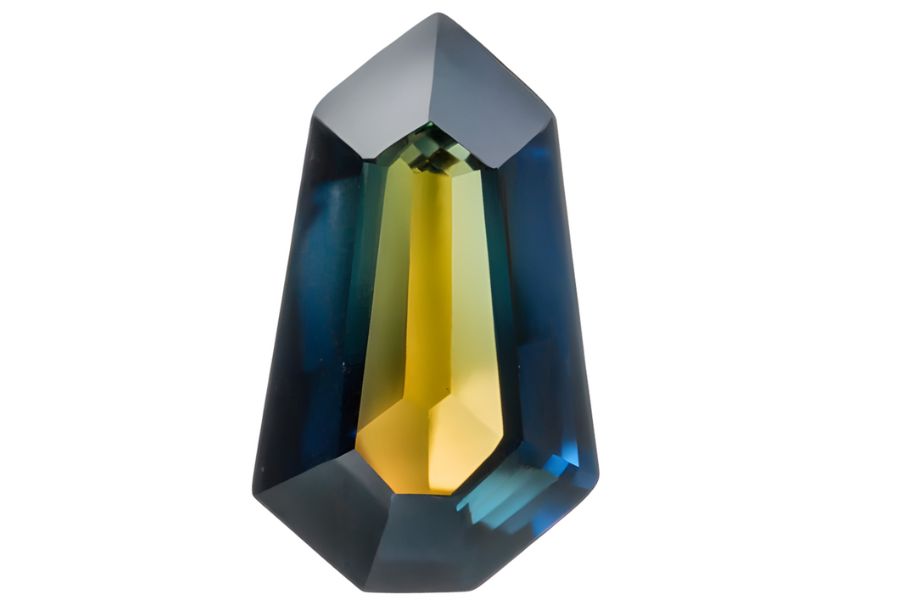When I first started hunting for rocks, minerals, and gems here in Georgia, I had no idea how much treasure was hiding right beneath my feet.
Whether you’re looking to build an impressive collection or make a little extra cash, our state is a goldmine—literally, in some cases. You’d be surprised how much value can come from something you dig up yourself.
Take amethyst, for example, a striking purple gem that collectors and jewelers alike can’t get enough of. Or gold, which has drawn fortune-seekers to Georgia since the 1800s.
And here’s the best part: you don’t have to be an expert to get started. With a little guidance and the right tools, anyone can join the hunt. Today, I’m going to show you what’s out there and where you can find it!
The Most Valuable Rocks, Minerals, And Gems You Can Find In Georgia
Here’s your guide to all the valuable rocks and minerals hiding in our state.
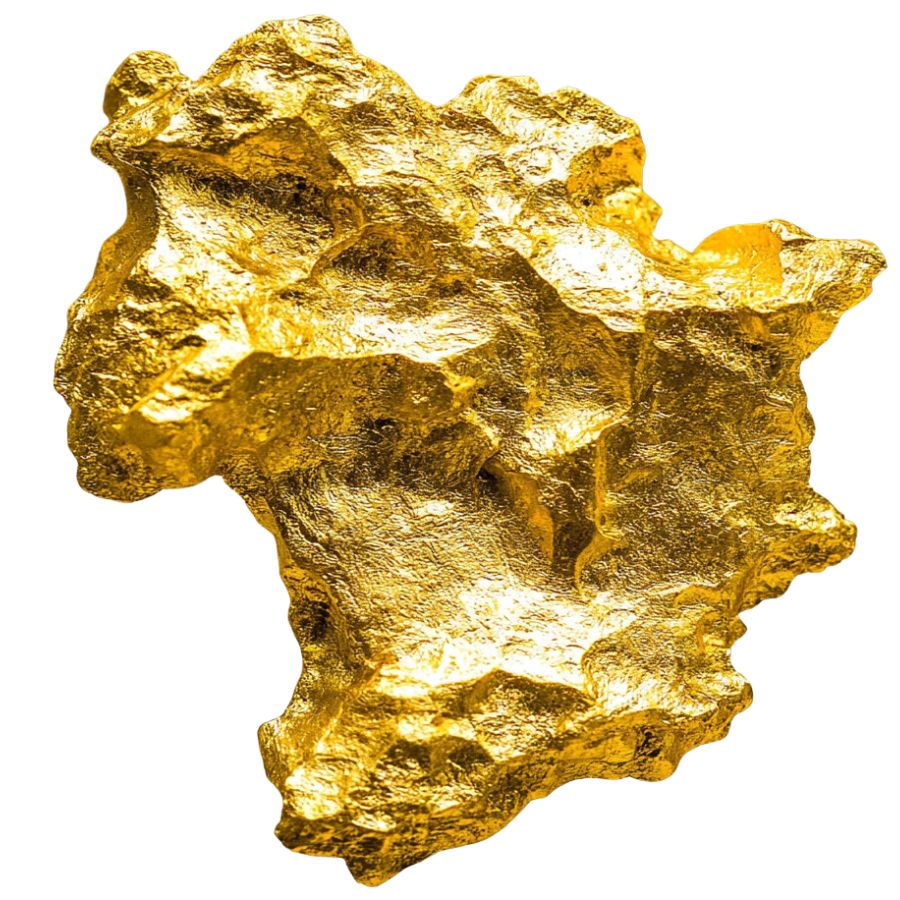
Gold
Gold in Georgia is primarily found in the form of placer gold and lode gold. Placer gold is the loose, nugget-like form of gold often found in riverbeds and streams. This is the kind you can sift for when panning.
Lode gold, on the other hand, is embedded in rock veins and requires more extensive mining techniques to extract.
Both types have been unearthed here, especially in the northern part of the state, making Georgia an exciting place for gold enthusiasts.
Why It’s Valuable
Gold isn’t just shiny; it’s incredibly useful. Besides being a symbol of wealth and beauty, gold is highly sought after for its durability, malleability, and resistance to tarnish. It’s used in everything from jewelry and coins to electronics and even medicine.
The gold found in Georgia holds historical significance, too—it was part of one of America’s first major gold rushes in the 1800s. That history makes Georgia gold even more special.
Great Places to Find It Here
Georgia offers plenty of spots to find gold. Here are a few places I recommend checking out:
- Dahlonega Gold Belt: Located in Lumpkin County, Dahlonega is famous for its role in the first U.S. gold rush. You can visit sites like the Consolidated Gold Mine, where you can tour the mine and even pan for gold.
- Etowah River: Flowing through Cherokee County, this river is known for its placer gold deposits. It’s a popular spot for panning.
- Chattahoochee National Forest: This forest spans a large area of North Georgia, and its streams and creeks are known to contain gold.
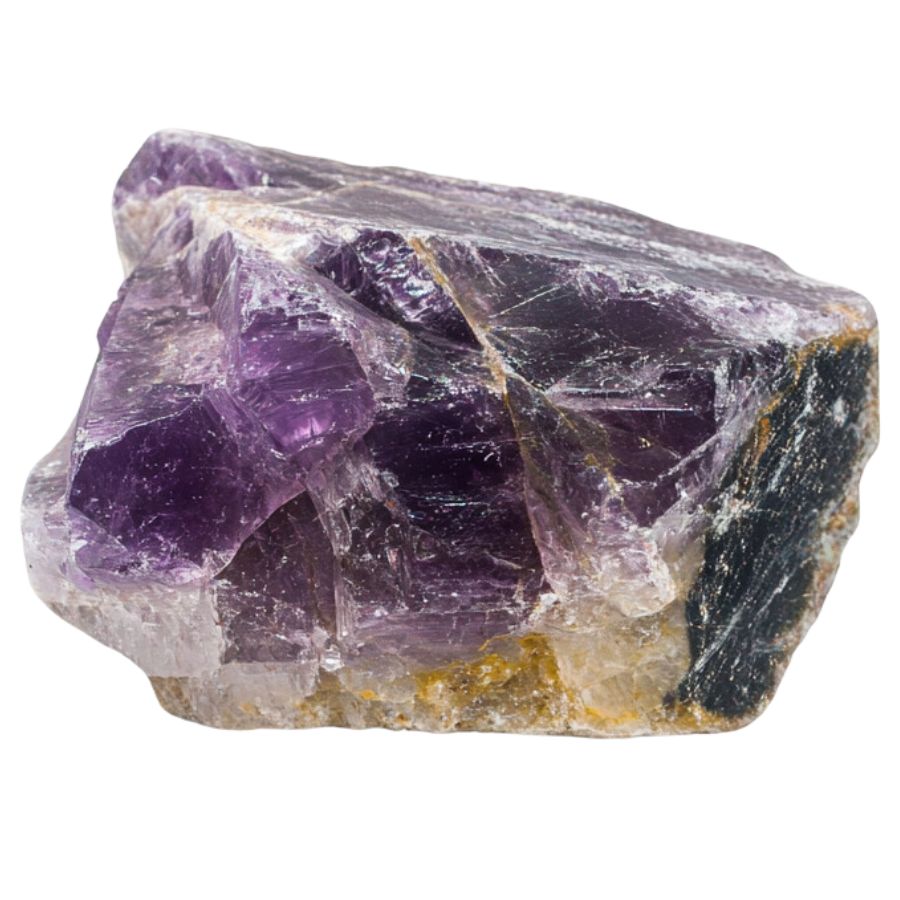
Amethyst
Amethysts are formed deep within the Earth’s crust, where heat and pressure work together over millions of years to create their characteristic purple color.
In Georgia, the amethysts you’ll find can vary in hue, from light pastel shades to dark, vibrant purples. Some even have unique zoning, where different shades of purple create fascinating patterns.
These stones are often found alongside other minerals like quartz and mica, adding to the excitement of discovery.
Why It’s Valuable
Amethysts aren’t just beautiful—they’re also steeped in history and meaning. People prize them for their calming properties, believing they can bring clarity and reduce stress.
Plus, high-quality amethysts with rich color and good clarity can be turned into stunning jewelry, which adds to their monetary value.
Great Places to Find It Here
If you’re ready to dig into some of Georgia’s prime amethyst hunting spots, you’re in for a treat. Here are a few places I’d recommend checking out:
- Hogg Mine: Located near LaGrange, this spot is popular for its abundance of crystals, including amethysts. It’s open for scheduled digs, making it a perfect destination for gem enthusiasts.
- Coldwater Creek: This lesser-known site is a gem for rockhounds looking for amethysts and quartz. It’s a serene spot, and with some patience, you might just uncover something spectacular.
- Cherokee County: Known for its mineral-rich areas, Cherokee County has several spots where you can search for amethysts. It’s a great area for both beginners and seasoned rockhounds.
Discover more Amethyst locations across Georgia in our comprehensive guide.
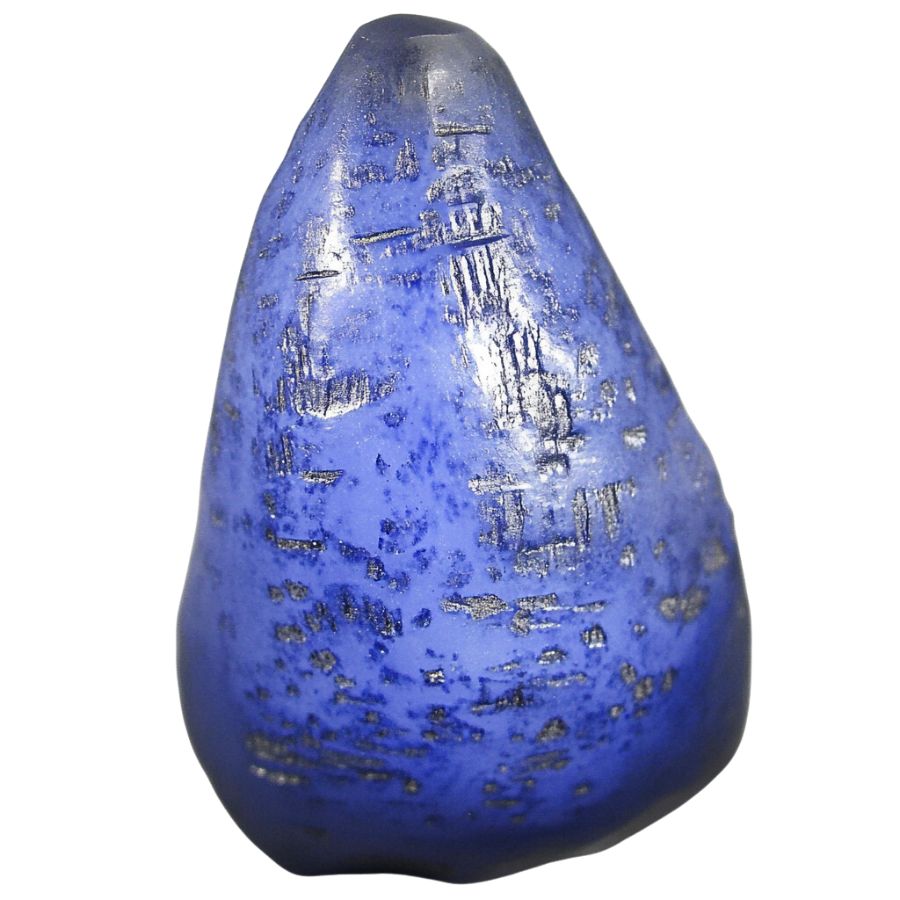
Sapphire
Sapphires are a variety of the mineral corundum, known for their durability and brilliant colors. While the classic sapphire is deep blue, they can also be found in shades of pink, yellow, green, and even colorless varieties.
Here in Georgia, most of the sapphires come in subtle blues or greens, and occasionally you might stumble upon a star sapphire, which has a unique star-like pattern that appears when light hits it just right.
Why It’s Valuable
Sapphires are valuable not just for their beauty but also for their strength—ranking just below diamonds on the hardness scale. This makes them perfect for jewelry that lasts generations.
The rarity of finding a high-quality sapphire in nature adds to its value, and there’s something extra special about discovering one yourself.
Great Places to Find It Here
Georgia is full of exciting spots for sapphire hunting. If you’re ready for an adventure, these are some of the top places to check out:
- Laurel Creek Mine: This hidden gem is a favorite for sapphire hunters. Bring your digging tools and prepare to spend hours searching for beautiful stones in a peaceful setting.
- Gold N Gem Grubbin in Cleveland: A popular family-friendly destination, this site lets you mine for a variety of gemstones, including sapphires.
- Blue Ridge Mountains: The Blue Ridge Mountains are also home to areas rich in gemstones, including sapphires. Hiking and gem hunting here is an unforgettable experience.
See our complete Georgia guide for additional Sapphire hunting grounds.
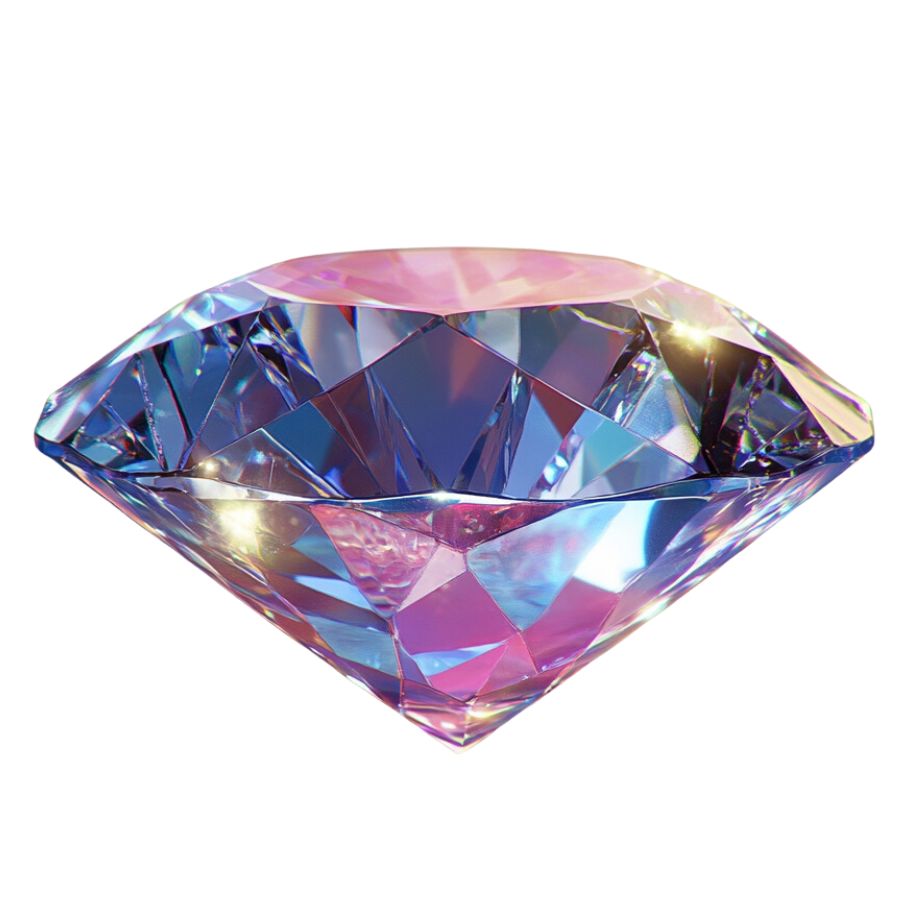
Diamond
In Georgia, most diamonds are found in alluvial deposits—places where water has carried them over time.
While natural diamonds aren’t super common here, we do find some interesting ones, like small industrial-quality stones and even rare, high-quality gems. (Here is your go-to guide for Georgia Diamonds)
Why Diamonds Are Valuable
Diamonds are prized for their rarity, durability, and brilliance. They’re one of the hardest materials on Earth, making them useful for cutting tools and industrial purposes, but their beauty is what we usually think of first.
A diamond’s value is determined by the “4 Cs”—carat, cut, color, and clarity. Here in Georgia, even small finds can be worth something, especially if they have unique qualities.
Great Places to Find Diamonds in Georgia
If you’re itching to try your luck at finding a diamond, Georgia has a few spots worth visiting. While it’s not guaranteed you’ll walk away with a sparkling gem, it’s a fun adventure to explore these places:
- Nacoochee Valley Placers: Nestled in the scenic northeastern part of the state, this area has a history of gold mining but is also known for occasional diamond discoveries in its gravel beds.
- Shell Bluff: Located near Augusta, this site is famous for fossils but has also yielded diamonds and other interesting minerals.
- Clayton County: In central Georgia, Clayton County has been the site of reported diamond finds, particularly in areas with gravel deposits.
Explore more Diamond sites throughout Georgia with our detailed guide.
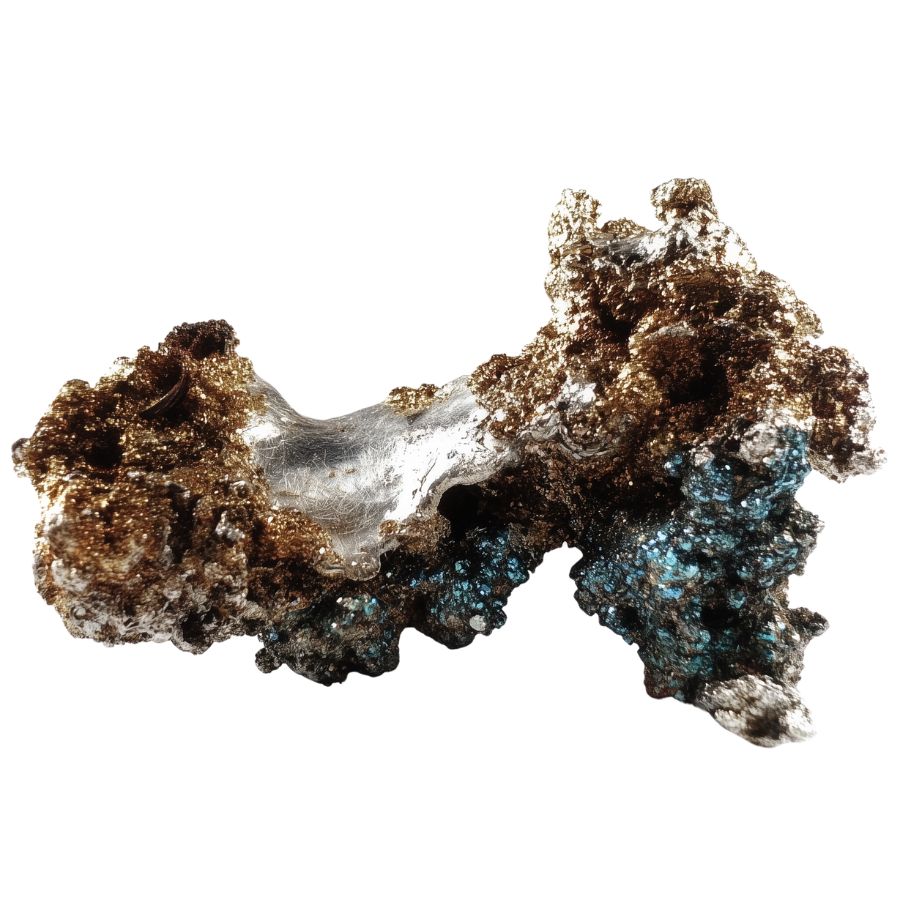
Silver
Silver is mostly found in its native metallic form or as part of other minerals like galena or argentite. These types of silver can often be found alongside gold or in areas where there’s been significant mining activity in the past.
Exploring for silver in Georgia can feel like stepping back in time to the old mining days, with the added excitement of uncovering something truly precious.
Why Silver is Valuable
Silver is prized for its beauty and versatility. People have used it for centuries in everything from jewelry and coins to photography and electronics. It’s also an excellent conductor of electricity, making it essential for many modern technologies.
But for us locals, the real value might just be in the thrill of discovering it. Whether you’re a hobbyist, a collector, or someone who appreciates a good story, finding silver in Georgia is like finding a piece of history that’s yours to keep.
Great Places to Find Silver in Georgia
If you’re looking to try your luck at finding silver in Georgia, head to these spots where history and geology come together:
- Oni District: This area in northeastern Georgia has a rich mining history and is known for its mineral deposits. While exploring, you might come across silver hidden among other metallic ores.
- McDuffie Area: Located in east-central Georgia, McDuffie County offers promising spots to look for silver, especially near old mining locations and creeks where sediment could hold small treasures.
- Magruder Mine: This historic site has been known to yield various minerals, including traces of silver. Visiting old mine tailings and surrounding areas here could lead to some exciting finds.
Browse our extensive guide to uncover more Silver locations in Georgia.
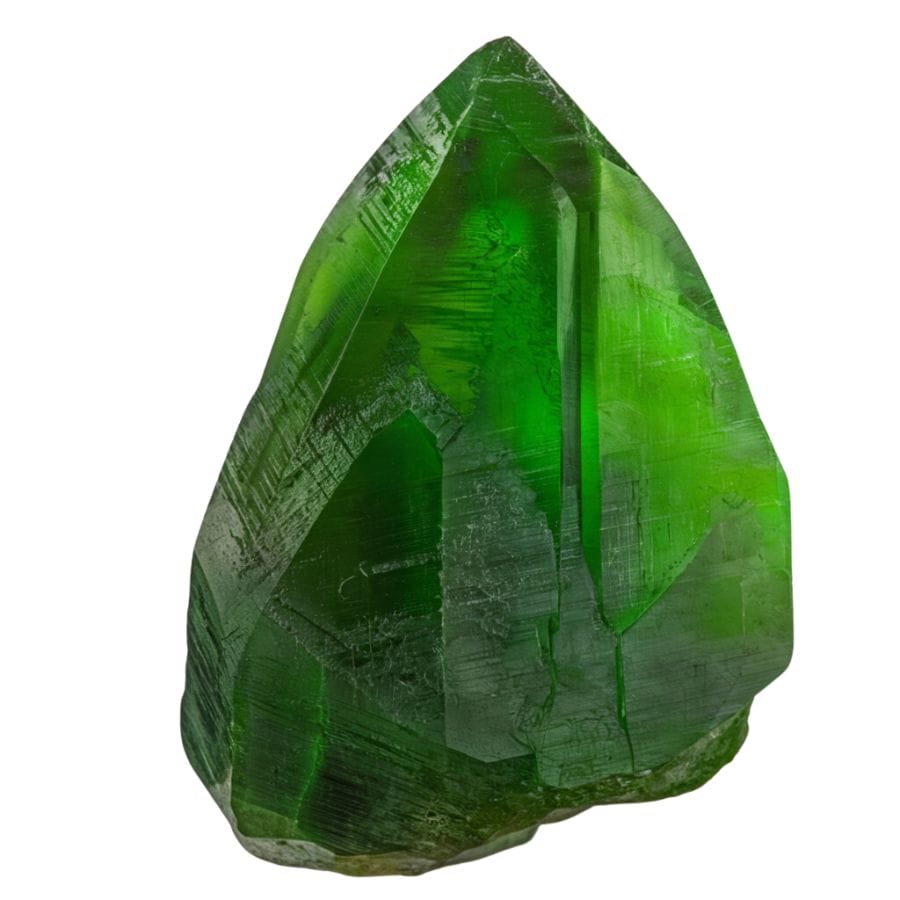
Peridot
Peridot is known for its bright green to yellow-green hues, and its color comes from iron content within the crystal. Here in Georgia, the peridot you might find is typically in small, rough pieces rather than large gem-quality stones.
Most of it is discovered in areas with volcanic rock or in deposits where olivine minerals are more common. Our complete guide to Peridot locations in Georgia is available for you.
Why It’s Valuable
Peridot is valued not only for its beauty but also for its history and meaning. It’s often associated with good luck, prosperity, and protection. Its natural green color symbolizes renewal and growth, making it a popular choice for jewelry.
On top of that, peridot is the birthstone for August, which adds personal value for many people. Even small pieces can be turned into unique keepsakes or gifts.
Great Places to Find It Here
If you’re ready to search for peridot in Georgia, here are some great spots to check out:
- Graves Mountain – This is a renowned location for mineral hunting in Georgia. While it’s better known for rutile and kyanite, some collectors have reported finding small traces of olivine minerals like peridot in the area.
- Chattahoochee River Valley – This area’s geological diversity sometimes reveals olivine-rich deposits. Keep an eye out for gravel beds along the riverbank that might hide peridot.
- Lilly Pad Village – Located in Blue Ridge, Lilly Pad Village is a fun spot for gem mining and treasure hunting. The family-friendly environment and chance to find gemstones make it a great outing for enthusiasts and beginners alike.
Find the best Peridot spots across Georgia in our complete guide.
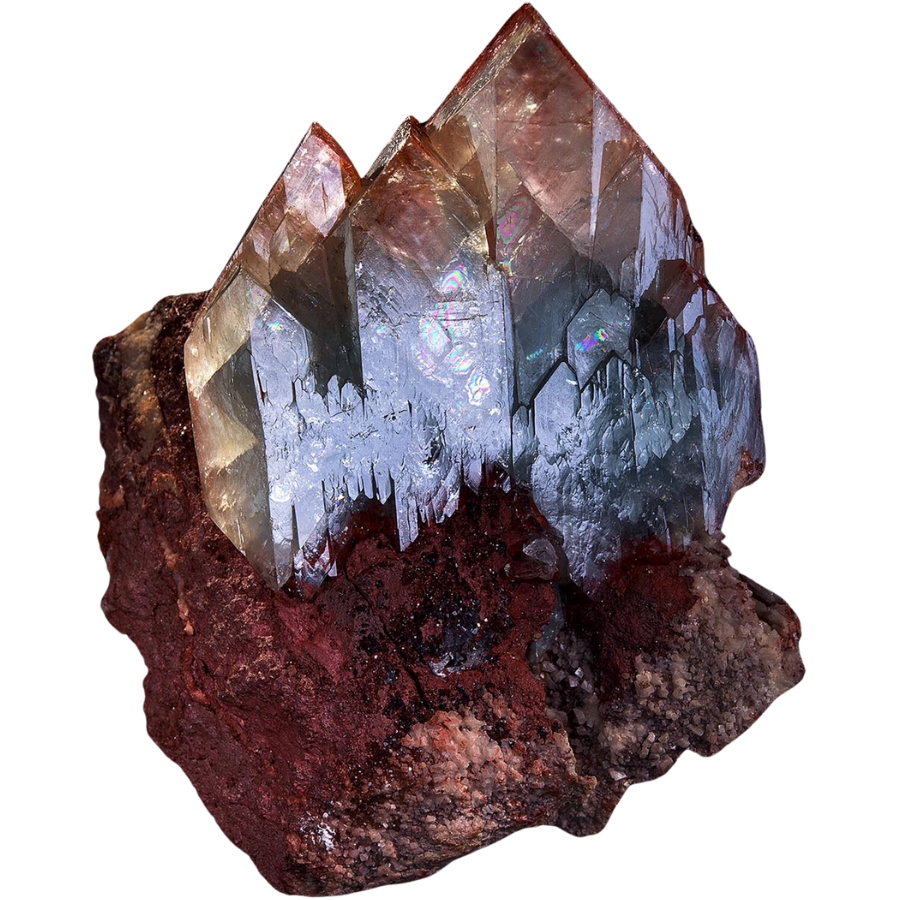
Barite
Barite, also known as baryte, is a mineral composed of barium sulfate. It’s most famous for its high density, making it incredibly heavy for its size. This density is what gives barite its name, derived from the Greek word “barys,” meaning heavy.
The barite found here is often associated with quartz and other minerals, making it even more appealing for collectors. Georgia’s deposits are typically found in sedimentary rock formations, especially in areas with a history of mining activity.
Why Barite Is Valuable
Barite’s primary use is in the oil and gas industry, where it’s ground into a powder and used as a weighting agent in drilling mud. This helps control pressure during drilling and prevents blowouts.
Beyond industrial uses, barite is a favorite among mineral collectors because of its unique weight, striking appearance, and the variety of forms it takes.
For those interested in science, it’s a great example of a heavy mineral that’s relatively easy to identify in the field.
Great Places to Find Barite in Georgia
If you’re looking to find a barite yourself, Georgia has plenty of locations worth checking out. Here are some of the best places where you can get started:
- Cartersville Mining District: This area in Bartow County is a hotspot for barite and has a long history of mining activity. You’ll find barite in association with other minerals like quartz.
- Linwood Quarry: Located near Augusta, this quarry is known for yielding high-quality barite specimens.
- Graves Mountain: Though better known for rutile and other minerals, Graves Mountain also has barite deposits.
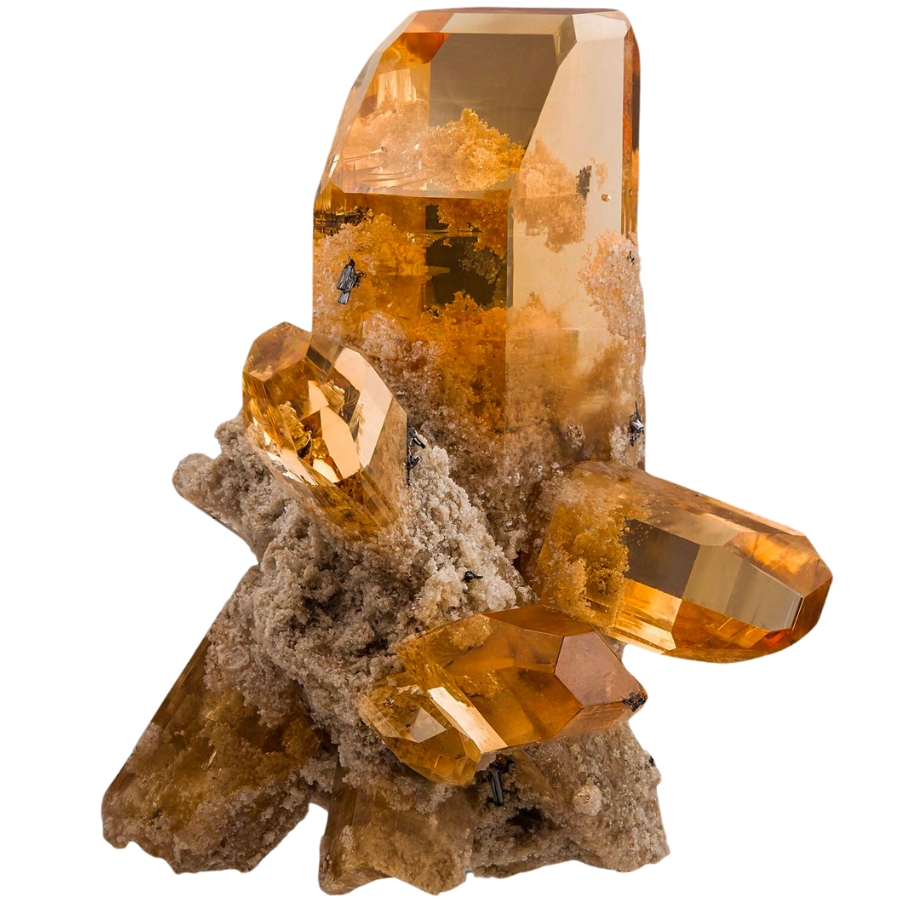
Topaz
Topaz is a silicate mineral that forms deep in the Earth under high temperatures and pressure.
Most of the topaz you’ll come across in Georgia tends to be colorless or pale blue. Occasionally, you might stumble upon yellow or light pink varieties, though they are rarer in our area.
Why It’s Valuable
Topaz holds a unique place in the gemstone world for its combination of beauty, durability, and versatility. It’s the birthstone for November, making it a meaningful find for many people.
Beyond its symbolic value, clear or vividly colored topaz is highly prized in jewelry. Natural topaz specimens, especially those you collect yourself, carry a personal value that adds to their charm.
Great Places to Find It
If you’re looking to try your hand at finding Topaz in Georgia, you’re in luck. We’ve got a few great spots where you can dig, search, and maybe even strike gold—well, technically, topaz!
- Etowah River: The riverbeds and sandbars along the Etowah River are known for their rich mineral deposits. Panning and searching here might reward you with small topaz crystals, along with quartz and other treasures.
- Kennesaw Mountain: The mountain’s rocky terrain occasionally reveals quartz and other minerals, and some lucky hunters have reported finding small topaz crystals in the area.
- Williams Mica Mine: Located in White County, this old mica mine is a favorite for rockhounding. While mica is the main attraction, diligent searching in the surrounding area can turn up small topaz crystals and other gems.
Get the full scoop on Topaz locations throughout Georgia here.
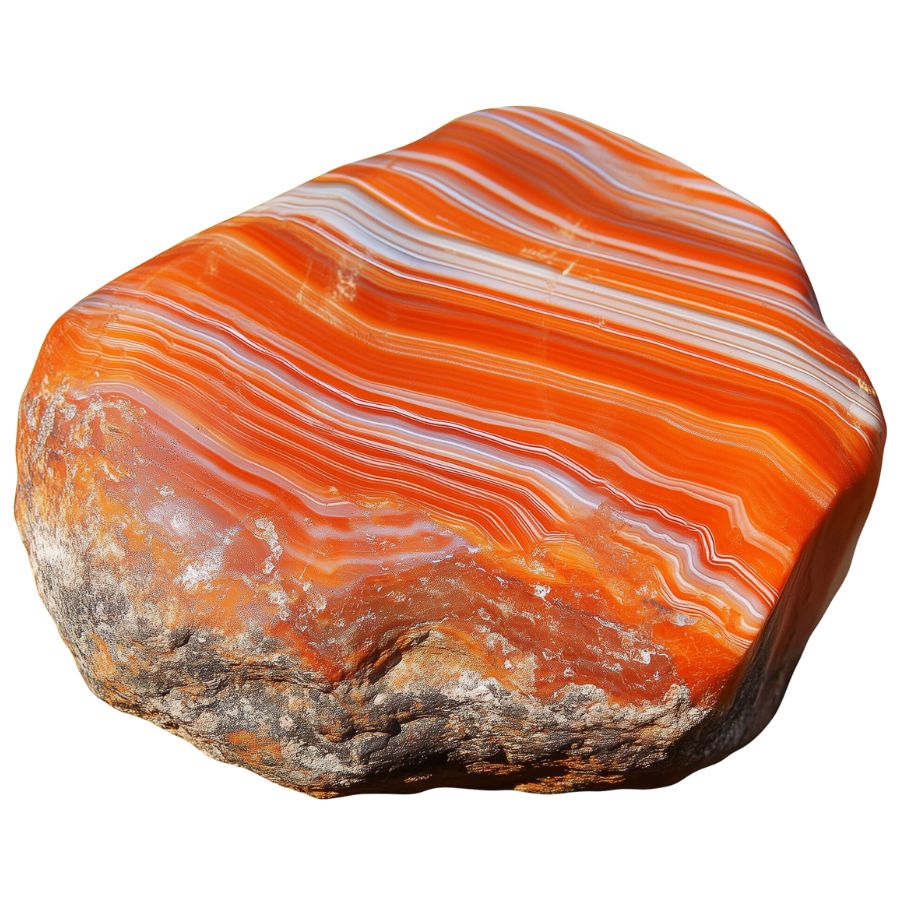
Agate
Agates are a type of chalcedony, which is a variety of quartz, known for their banded patterns. These bands form as layers of silica-rich minerals settle in rock cavities over time.
Here in Georgia, we find some unique types of agates. You can look at our complete guide to finding Agate across Georgia to start the search.
Why It’s Valuable
Agates are valuable for more than just their beauty. For collectors, they hold a piece of Earth’s history, as each one formed millions of years ago.
Their durability makes them perfect for jewelry, while their colors and patterns make them sought-after for display.
Great Places to Find It Here
Georgia is full of great spots to hunt for agates. Here are my top three picks:
- Taylor Ridge: Located in northwest Georgia, Taylor Ridge is a natural wonderland where agates and other colorful stones can be found along its trails and rocky outcroppings.
- Holton Quarry: This privately owned site near Macon is a treasure trove for agate enthusiasts. You can uncover incredible specimens right from the quarry walls.
- Coastal Plain Rivers: The Ocmulgee and Flint Rivers are also known for agate deposits. Keep an eye out for colorful stones in riverbeds and sandbars, especially after heavy rains.
See where else to find Agate in Georgia with our full guide.
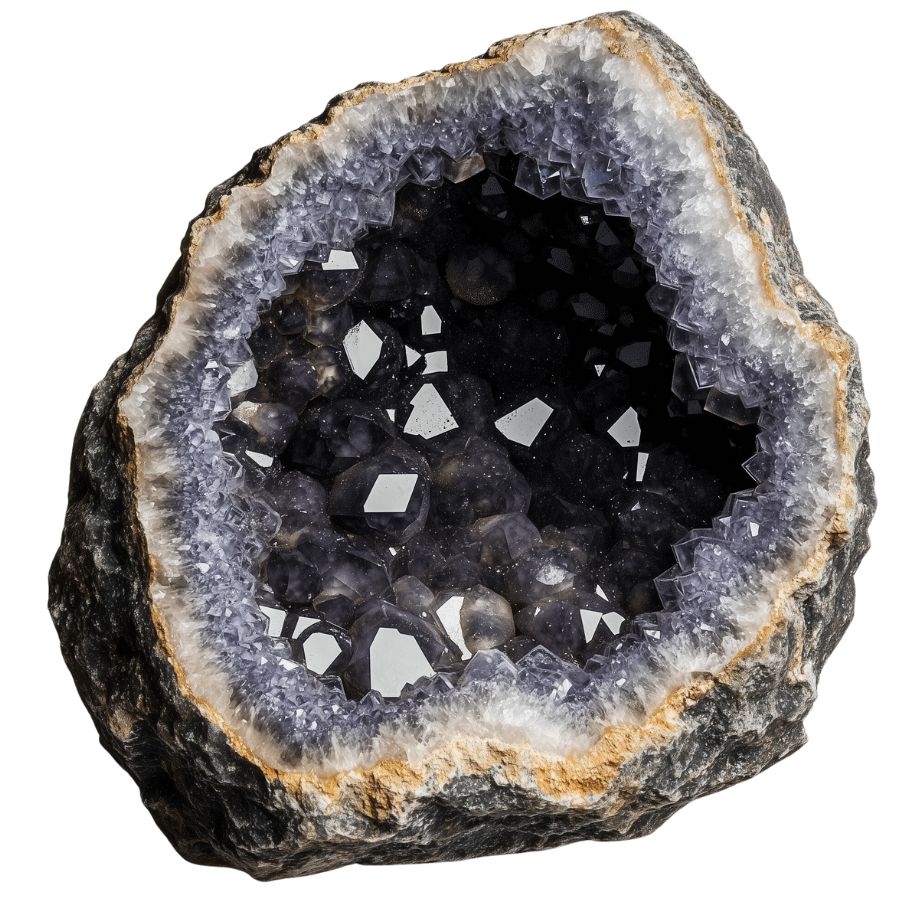
Geode
Geodes are hollow rocks lined with crystals or mineral formations inside. From the outside, they might look plain, but inside they often hold stunning quartz, calcite, or amethyst crystals.
In Georgia, you’ll mostly come across quartz geodes, and if you’re lucky, you might even stumble upon some with amethyst. These treasures form when mineral-rich water fills a cavity in a rock and slowly crystallizes over thousands of years.
Why Geodes Are Valuable
Geodes are more than just pretty rocks—they’re like little natural time capsules. The crystals inside tell a story about the earth’s geological history and conditions over millions of years.
They’re also highly sought after by collectors and jewelry makers for their unique beauty.
Great Places to Find Geodes in Georgia
If you’re itching to go on a rock-hunting adventure, Georgia has some excellent spots for geode hunting. Here are a few places you’ll want to check out:
- North Georgia Mountains: The mountains here are known for their abundance of minerals. Creek beds and trails in this area often yield quartz and geode finds.
- Emerson Area: Located in Bartow County, this area is rich in mineral deposits. Explore nearby creek beds and rocky outcrops where erosion might have exposed geodes.
- Bartow Area: Look near quarries and natural outcrops, where geodes and other minerals are often found.
Access more Geode locations through our comprehensive Georgia guide.
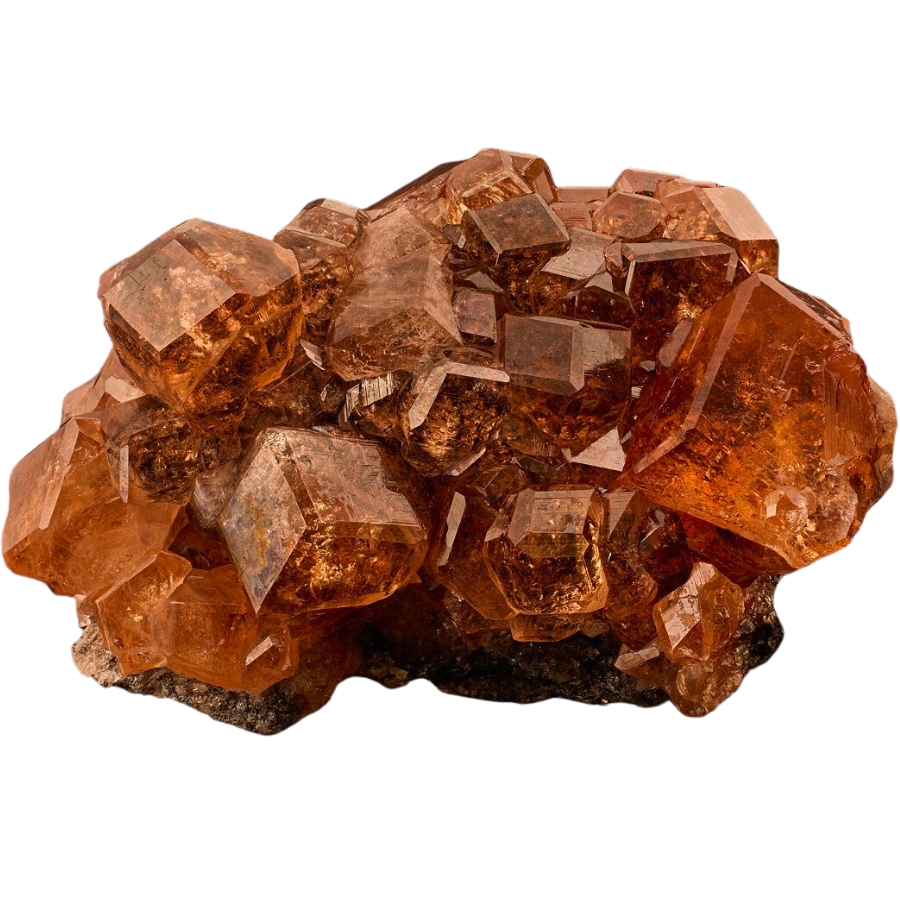
Garnet
Garnet is a mineral group known for its beautiful, glassy crystals, which can range in color from deep red to green and even orange. Here in Georgia, the most common types are almandine and pyrope.
Almandine is often a deep reddish-brown, while pyrope boasts a vibrant red hue. These stones are formed under high-pressure conditions, often found in metamorphic rocks like schist.
Why Garnets Are Valuable
Garnets aren’t just pretty—they’ve been prized for centuries for both their beauty and practicality. Their rich colors make them a popular choice for jewelry, and their hardness means they can withstand wear over time.
In addition to their aesthetic appeal, garnets are also used industrially as abrasives due to their durability. For geology buffs, they’re valuable as indicators of the intense geological conditions that shaped our landscape.
Great Places to Find Garnets in Georgia
You’ll be glad to know that garnets can be found across Georgia. Here are some of my favorite spots to check out:
- LaGrange area: It’s a fantastic place to find garnets along with other gems like quartz and aquamarine.
- Corundum Hill: Nestled in the mountains of North Georgia, this area has been known to yield garnets as well as other gemstones like sapphire and ruby.
- Allatoona Lake: The shores around Allatoona Lake have been a great place for finding garnet-bearing schist.
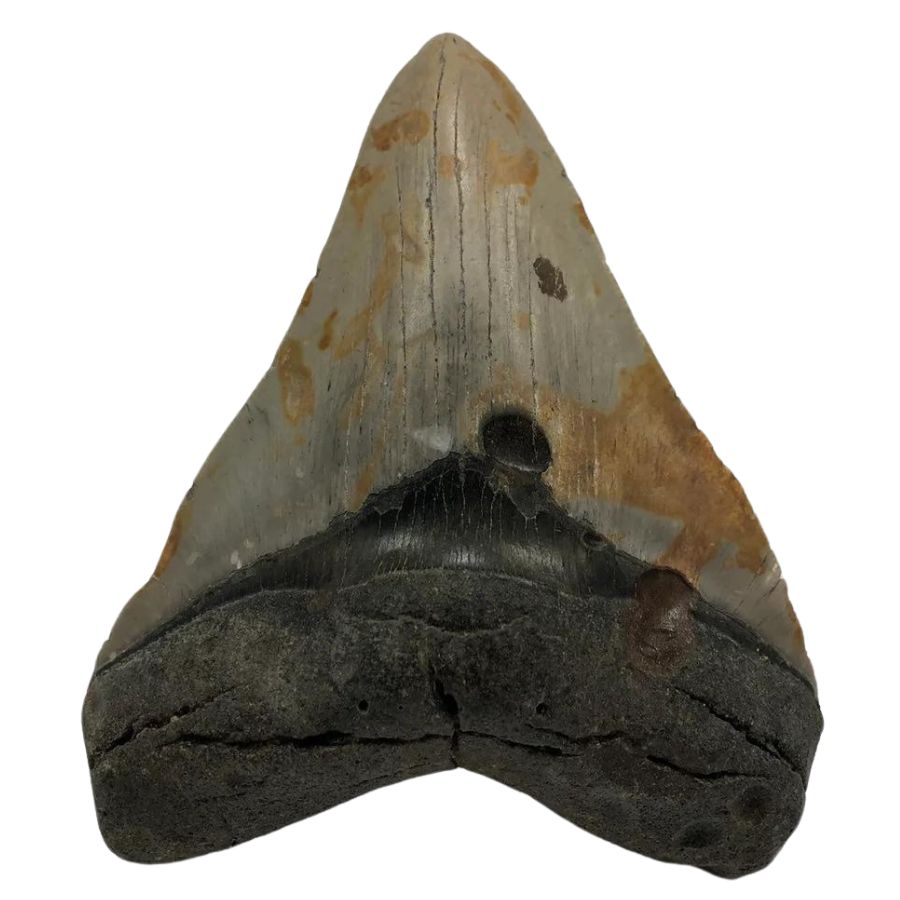
Megalodon teeth
Megalodon teeth are fossilized remains of the largest shark to ever exist, reaching up to 60 feet in length. The teeth are famous for their triangular shape, serrated edges, and sheer size!
In Georgia, you can find teeth in various sizes and colors, depending on the age and the minerals they absorbed during fossilization. From small, worn-down juvenile teeth to pristine, full-sized adult ones, every discovery is unique.
Why It’s Valuable
These teeth are prized for a few reasons. First, they’re remnants of a creature that swam our ancient seas millions of years ago—a tangible piece of history.
Collectors also value them for their size, condition, and unique colors, and larger, well-preserved teeth can fetch high prices on the market.
But for most of us, the true value lies in the thrill of finding one and imagining the incredible shark it once belonged to.
Great Places to Find It Here
If you’re ready to hunt for a Megalodon tooth, Georgia has some fantastic spots. Here are three of the best places to explore:
- Little St. Simons Island: This secluded island is a haven for fossil hunters. The beaches and tidal areas are great for finding fossilized teeth, especially after a storm stirs things up.
- Sharktooth Island: Located near Savannah, this aptly named spot is famous for its abundance of fossilized shark teeth. You’ll need a boat to get there, but it’s well worth the trip.
- Satilla River: The banks and sandbars of the Satilla River are great places to search for fossils. Bring a sifter and explore the gravelly areas where teeth often settle.
Our complete Georgia guide shows you where to find more Megalodon teeth.
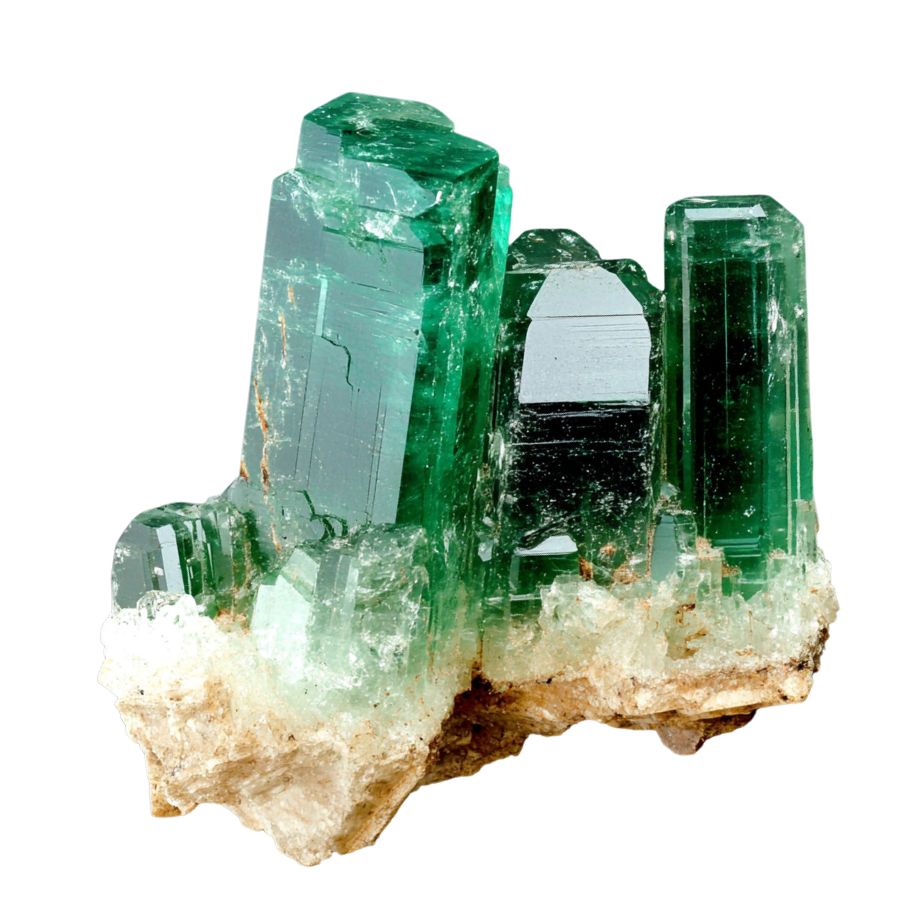
Beryl
Beryl is made up of beryllium, aluminum, and silicate, and it often forms in pegmatite rocks.
In Georgia, you can find several varieties, including greenish beryl, golden beryl, and sometimes even aquamarine. You can locate Beryl deposits using our Georgia guide.
Why It’s Valuable
Beryl isn’t just valuable because it’s gorgeous. Some types, like emeralds and aquamarine, are treasured as gemstones in jewelry.
Even the less colorful varieties of beryl are sought after for their rarity and use in industrial applications.
Great Places to Find It in Georgia
Our state has some great spots where you can get started. Here are a few:
- Ball Ground District: Situated in Cherokee County, the Ball Ground area is rich in pegmatites, making it a promising place to look for beryl and other crystals.
- Taylor Mine: Located in the Madison County area, Taylor Mine is a known pegmatite site where beryl and other minerals like feldspar and quartz have been discovered.
- Little Broad River: This scenic river in Wilkes County is a good spot for mineral hunting. Beryl has been found along its banks, and it’s a fun place to explore while enjoying the outdoors.
For more Beryl locations, view our complete Georgia guide here.
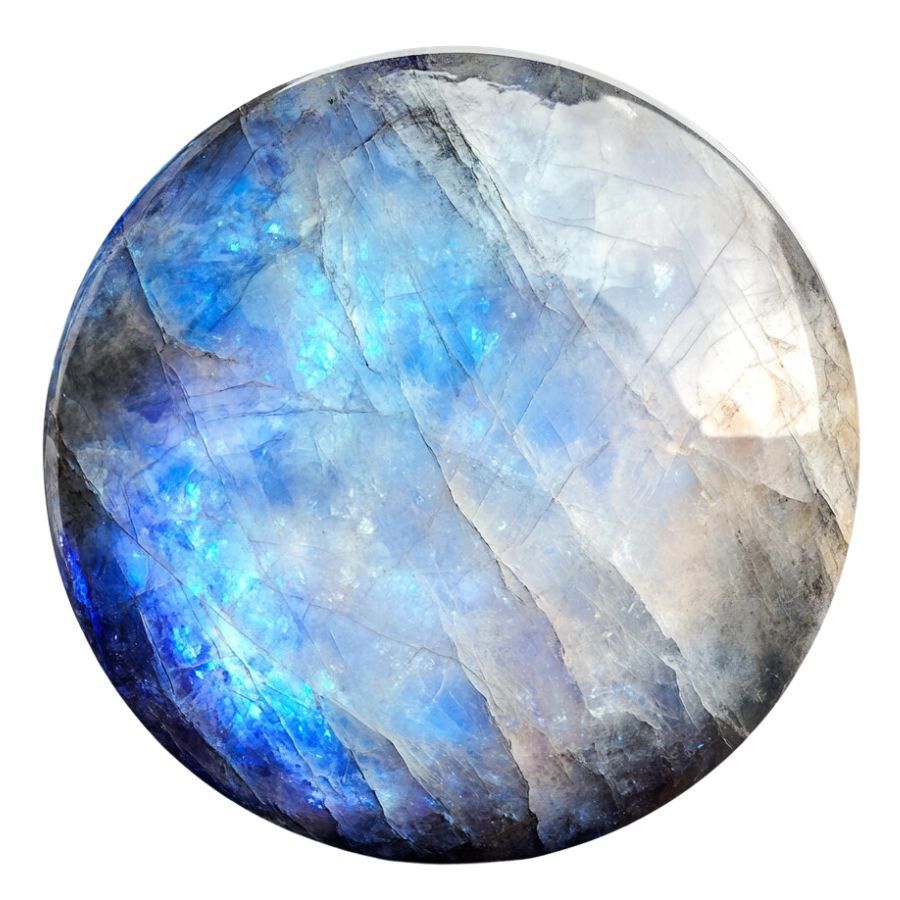
Moonstone
Moonstone is best known for its unique shimmer, called adularescence, which comes from light scattering within its layered structure.
The moonstones found in Georgia often come in subtle shades like creamy white, pale gray, or light peach (Your Georgia Moonstone search guide is available here).
Why It’s Valuable
People love moonstone not only for its captivating glow but also for the myths and meanings tied to it. It’s thought to bring calm, enhance intuition, and even symbolize new beginnings.
On a practical level, its beauty makes it perfect for jewelry like rings, pendants, and earrings. For collectors, finding moonstone locally adds a personal connection that makes it even more special.
Great Places to Find It Here
If you’re looking to hunt for moonstone in Georgia, these spots are great places to start:
- Mitchell Creek: Known for its serene environment, this area occasionally yields moonstone along with other minerals, especially if you search along its creek beds.
- Green Farm Area: This lesser-known gem-hunting spot offers a chance to dig for feldspar varieties, including moonstone, in a peaceful rural setting.
- Forsyth County: With its mix of creeks and rocky terrains, Forsyth County has several areas where moonstone and other fascinating stones have been discovered.
View our complete Georgia guide for more Moonstone locations near you.
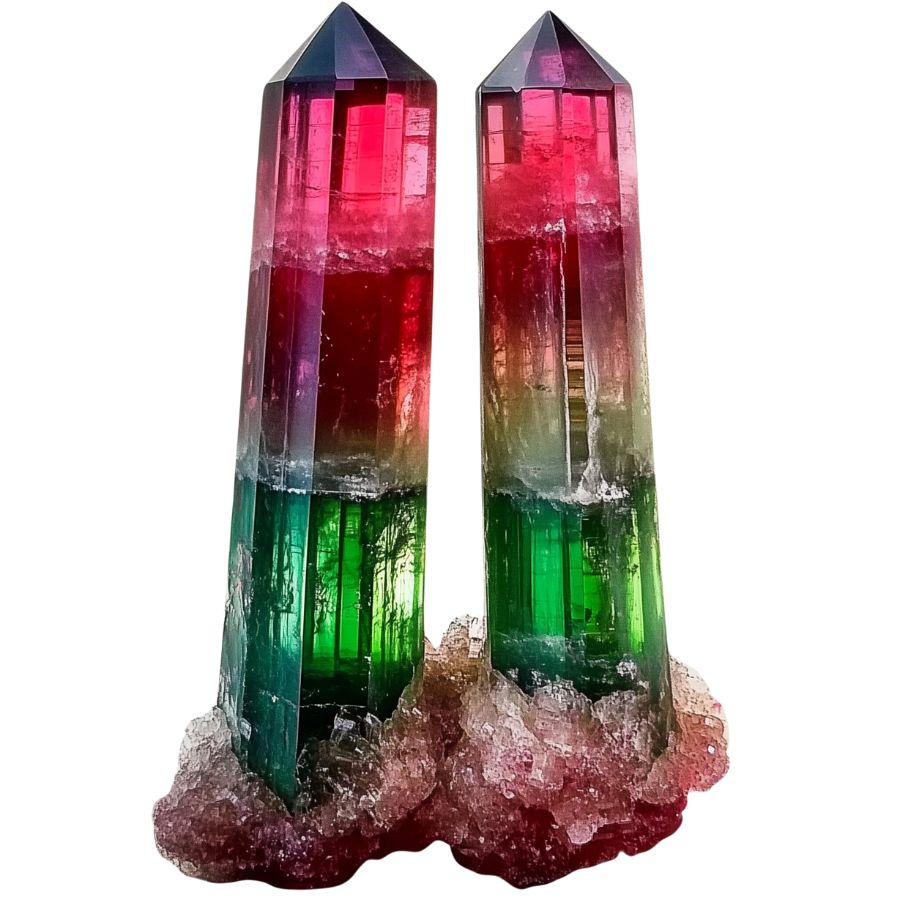
Tourmaline
Tourmaline is a semi-precious gemstone that comes in a rainbow of colors, from vibrant greens and pinks to rich blacks. It forms in crystal structures and is often found in quartz or granite rocks.
In Georgia, the most common types of tourmaline are schorl (black tourmaline) and elbaite (which can appear in shades of pink, green, and sometimes even bi-colored forms). These varieties are prized by collectors and lapidary artists alike for their unique beauty and versatility.
Why Tourmaline Is Valuable
Tourmaline isn’t just gorgeous—it’s also packed with qualities that make it valuable. For one, its vibrant colors are eye-catching and highly sought after in jewelry-making.
Plus, black tourmaline is often used in metaphysical practices for its supposed protective and grounding properties.
Great Places to Find Tourmaline in Georgia
If you’re ready to grab your tools and start searching, Georgia has some prime spots for finding tourmaline. Here are my top picks:
- Sweat Mountain: This spot has been known for yielding black tourmaline crystals, especially around the granitic outcroppings.
- Yahoola Creek: The creek and its surrounding areas sometimes reveal tourmaline crystals hidden in the stream beds or nearby quartz veins.
- Almond Quarry: This old quarry is a hotspot for a variety of minerals, including schorl and colorful elbaite tourmaline.
Explore additional Tourmaline sites with our comprehensive Georgia guide.
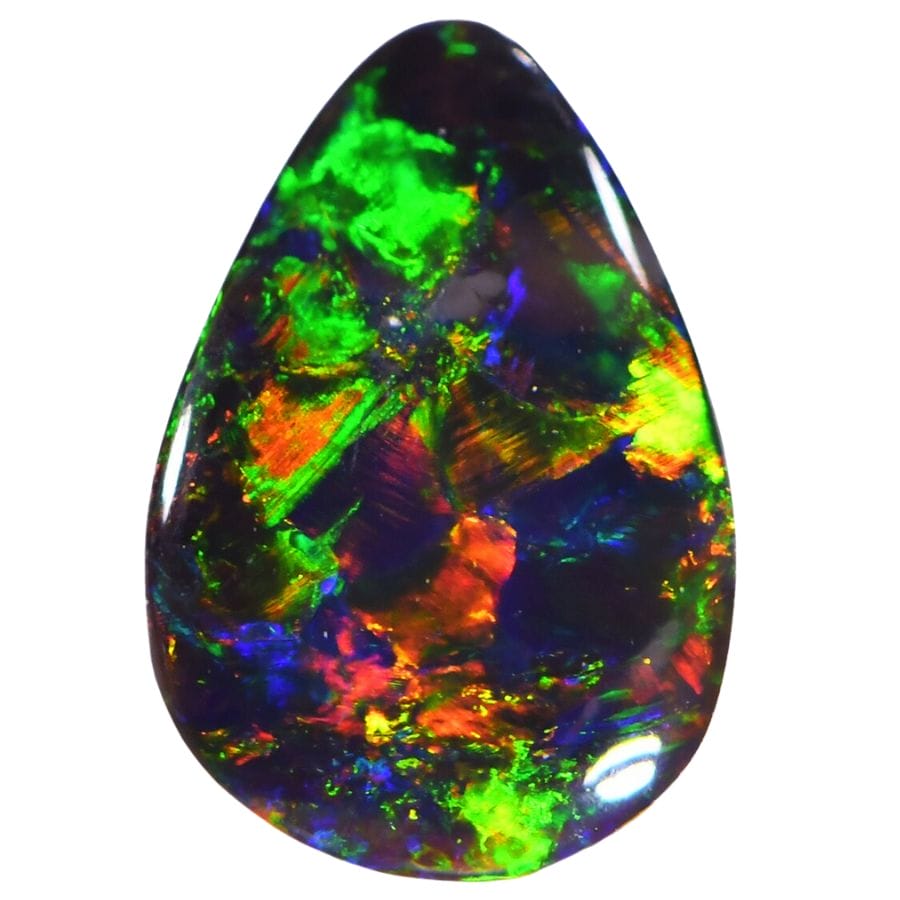
Opal
Opal is a hydrated form of silica, famous for its play-of-color—those brilliant flashes of light that seem to dance across its surface.
In Georgia, you can find common opals, which lack the flashy play-of-color but still have a beautiful range of hues like white, pink, and earthy tones.
Occasionally, there are reports of opals with a slight sheen, giving them an understated elegance. You can find our existing guide about Opal deposits in Georgia.
Why Opal is Valuable
Opal is prized not just for its beauty but also for its uniqueness. No two opals are exactly alike, making each one special. In Georgia, opals are a bit rare, which adds to their value.
Collectors and hobbyists love them for their natural beauty, while jewelers appreciate their versatility. Even the simpler common opals found here can be polished into gorgeous pieces that showcase the earthy charm of our state.
Great Places to Find Opals in Georgia
If you’re ready to try your hand at finding some opal, there are a few spots around the state that are worth visiting. These locations are known for yielding some cool finds if you’re patient and persistent:
- Stone Mountain – While Stone Mountain is more famous for its granite, the surrounding area has a rich variety of minerals, including opals. Spend some time exploring nearby trails and streams.
- Lake Burton Area – Some creeks and hillsides around the lake are known to contain silica-based stones, including opals.
- Burke County – Known for its diverse geology, Burke County has been a spot where collectors have found opals in the past. Check out stream beds and open land.
Find more Opal gathering spots in our complete Georgia resource.
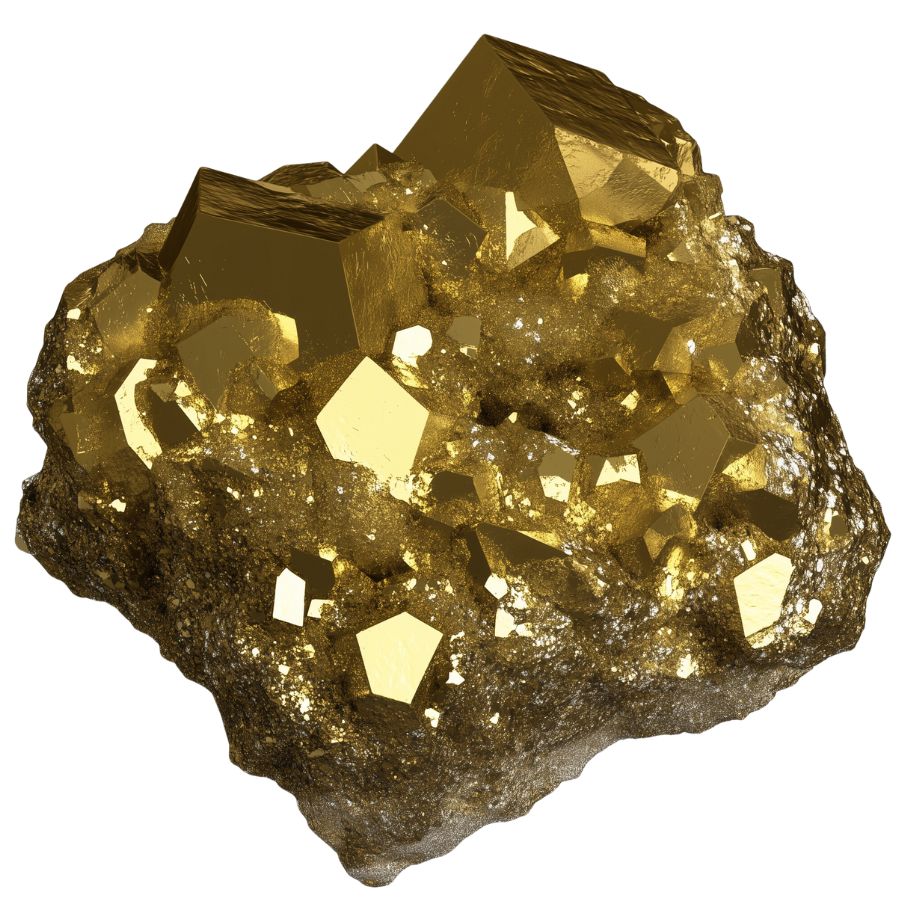
Pyrite
Pyrite is an iron sulfide mineral, known for its metallic luster and brassy yellow hue. It forms in different environments, often alongside quartz, slate, or even real gold. Here in Georgia, pyrite shows up in a few varieties.
The most common are massive pyrite (big chunks with no crystal shape), cubic pyrite (those perfect cube-shaped crystals), and pyrite mixed with other minerals like chalcopyrite or galena.
Why It’s Valuable
It’s not gold, but pyrite is valuable in other ways. Back in the day, people used pyrite to create sparks for starting fires. Now, it’s mined for sulfur and iron, and geologists even use it as a clue to find actual gold deposits.
For collectors, its brilliant sparkle and fascinating crystal shapes make it a must-have for any mineral display.
Great Places to Find It Here
Georgia’s landscape is perfect for pyrite hunting if you know where to look. Here are three awesome spots I’d recommend checking out:
- Hogg Mine, LaGrange
This private mine is a gem for collectors and rockhounds. It’s known for a variety of minerals, including quartz and pyrite. - Pigeon Mountain: Nestled in the northwest corner of the state, in this area you might find pyrite crystals alongside other geological treasures like quartz.
- Tallapoosa River Area: This lesser-known spot has scattered deposits of pyrite and other minerals. Take your pan along and enjoy some scenic views while you search.
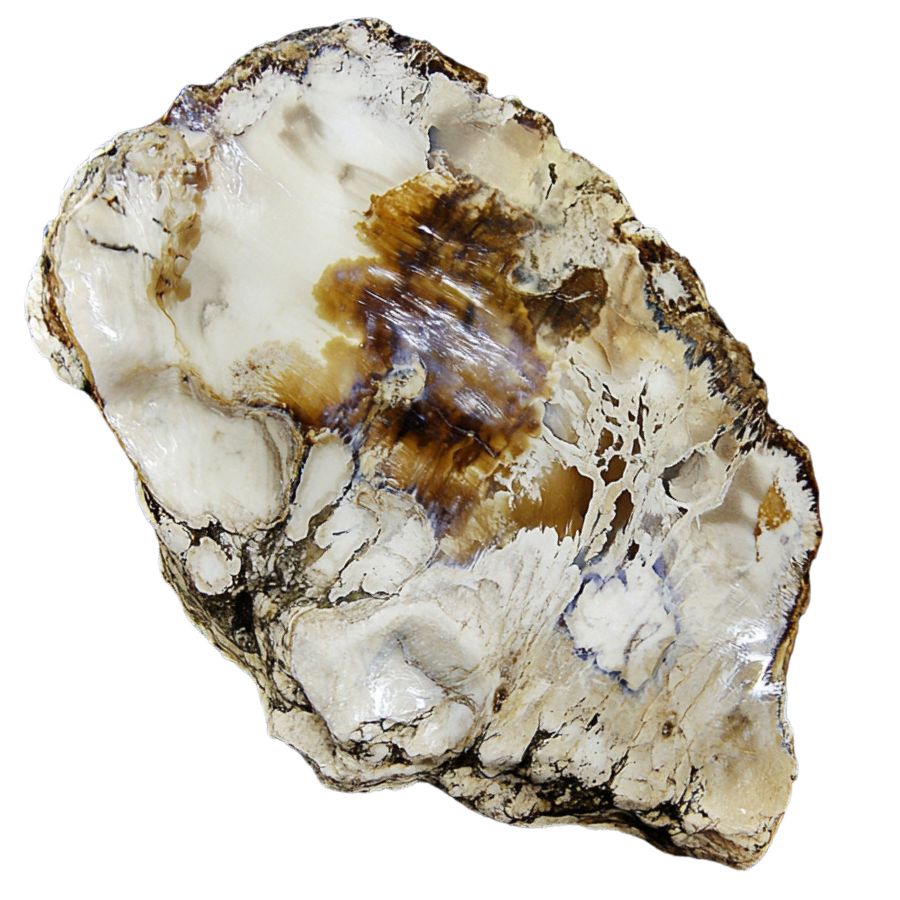
Petrified wood
Petrified wood forms when trees are buried under sediment and exposed to mineral-rich water for ages. Over time, the wood’s organic material is replaced by minerals like quartz, creating stone versions of the original trees.
In Georgia, you’ll often find petrified wood with a variety of colors and patterns, depending on the minerals present during the fossilization process.
Common types include quartz-rich petrified wood and pieces with hints of iron, manganese, or even opal, giving them vibrant red, yellow, and sometimes rainbow-like hues.
Why It’s Valuable
Petrified wood is valuable for several reasons. First, it’s a tangible link to ancient ecosystems and offers a window into Georgia’s prehistoric environment. Collectors prize it for its natural beauty, unique patterns, and durability.
Plus, polished petrified wood can be turned into beautiful jewelry, decorations, and keepsakes. It’s also scientifically significant, helping researchers study ancient plant life and geology.
Great Places to Find Petrified Wood in Georgia
Georgia is full of great spots to find Petrified wood. Here are some of my favorites:
- South Georgia Farmland: Many farmers in South Georgia have unearthed petrified wood while plowing fields. If you know someone in the area, it’s worth asking for permission to take a look around.
- Columbia County: This area is known for its rich geological history. Old creek beds and construction sites in Columbia County sometimes reveal petrified wood.
- Flint River Basin: The Flint River region is another hot spot for fossilized treasures, including petrified wood. Search around gravel bars and sandy areas for your best chances.
To learn about more Petrified wood locations consult our full Georgia guide here.
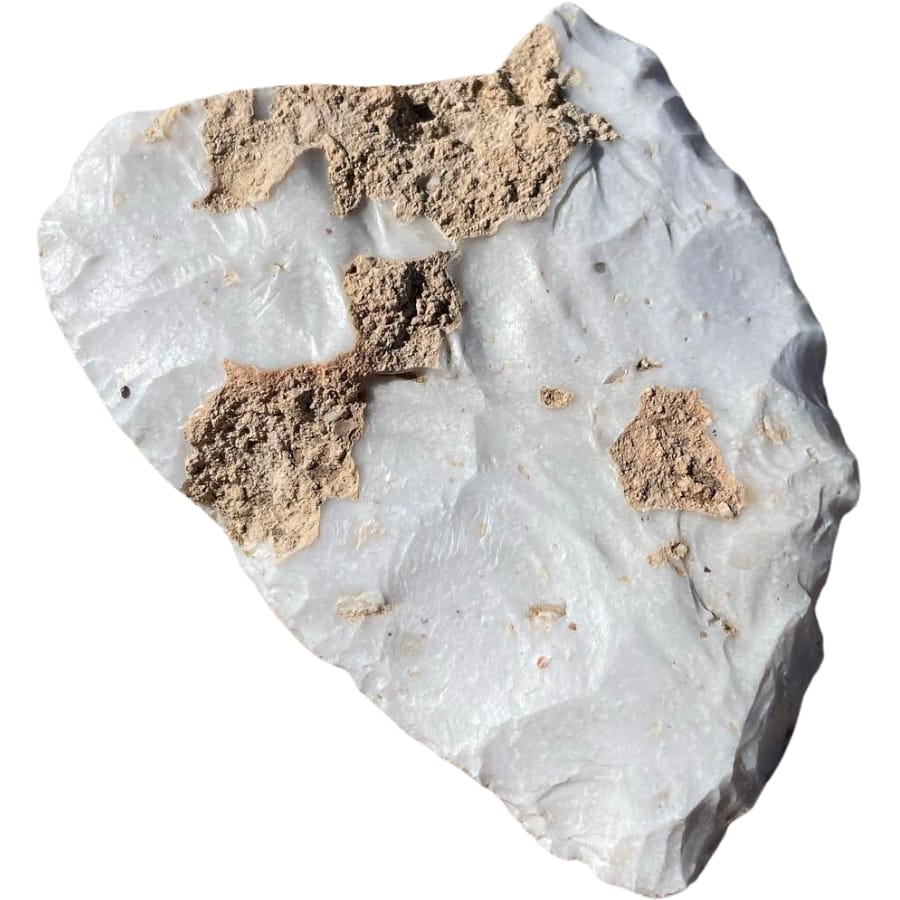
Chert
Chert is a sedimentary rock made mostly of microcrystalline quartz. It forms in layers or nodules, often within limestone, and can have a range of colors like gray, brown, red, or even green.
In Georgia, we have several types of chert, including Flint chert, Radiolarian chert, and Jasper chert.
What It Is and Why It’s Valuable
Historically, it was highly valued by Native Americans for tools and weapons, like arrowheads and scrapers, because it fractures to create sharp edges. Today, it’s prized by geologists and collectors alike.
Chert provides insight into ancient ecosystems and serves as a beautiful material for knapping and jewelry-making.
Great Places to Find It Here
If you’re up for an adventure, Georgia has some fantastic spots where you might find chert. Here are three great places to check out:
- Lake Sinclair: The shorelines and nearby eroded areas are great places to spot pieces of chert, especially after rain or when water levels drop.
- Lookout Mountain: This iconic location is not only beautiful but also rich in geological treasures, including chert. Look for stream beds or exposed rock faces along hiking trails.
- Chattooga County: Known for its natural beauty, this area offers plenty of opportunities to find chert, especially in riverbeds and fields near limestone outcrops.
Discover hidden Chert locations with our complete Georgia guide.
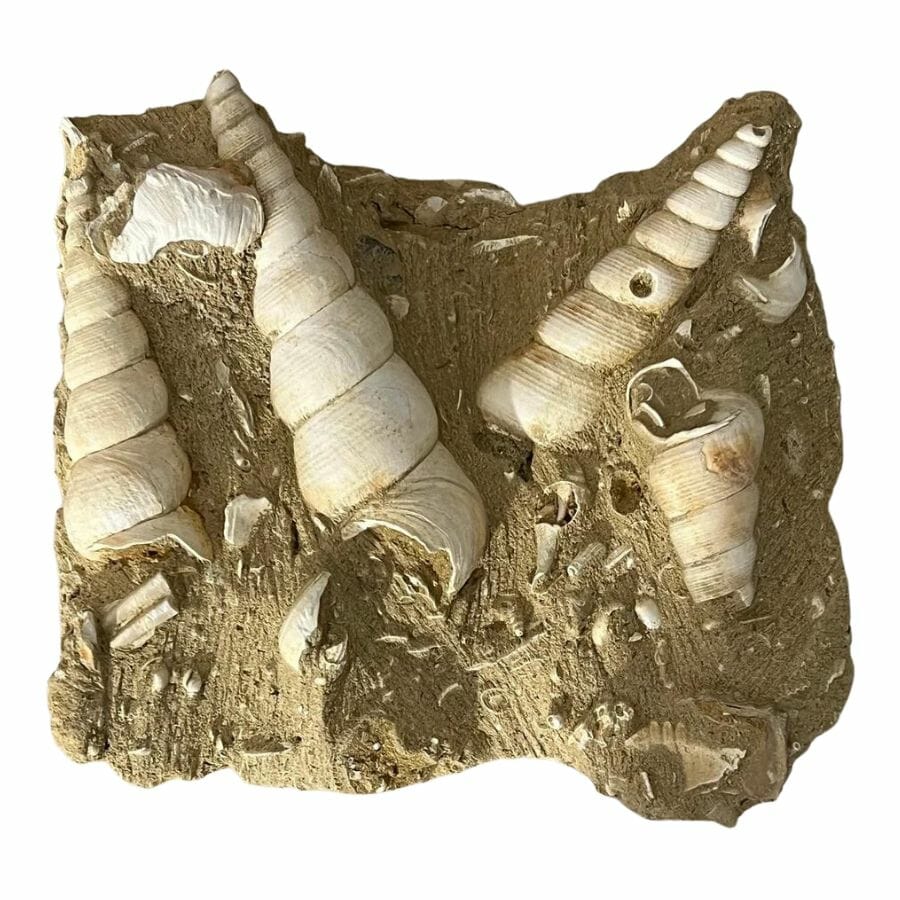
Fossils
Fossils are incredible remnants of ancient life, preserved in rock over millions of years. Here in Georgia, we’re lucky to have a rich and diverse collection of fossils that tell the story of our state’s prehistoric past.
From ancient sea creatures to land-dwelling giants, there’s so much to discover right in our own backyard (check out our complete guide to Georgia Fossils spots).
Why Fossils Are Valuable
Fossils aren’t just cool to look at—they’re like time capsules. They help scientists understand what Georgia looked like millions of years ago and provide clues about extinct species, climate changes, and the evolution of life.
Plus, for amateur collectors, finding a fossil is a thrill like no other. It’s a direct connection to a time long before humans walked the Earth.
Great Places to Find Fossils in Georgia
If you’re ready to go fossil hunting, Georgia has some great spots where you can try your luck. Here are a few of my favorites:
- Withlacoochee River: This river is a treasure trove for marine fossils like shark teeth and mollusks, offering a glimpse into Georgia’s ancient oceanic past.Sand Hill Region near Columbus: Known for its vertebrate fossils, you might stumble across ancient bones or teeth.
- Lumpkin-Louvale Trail: This area has a mix of plant and marine fossils, making it an exciting spot for a variety of finds.
Want more Fossils spots? View our complete Georgia guide here.

